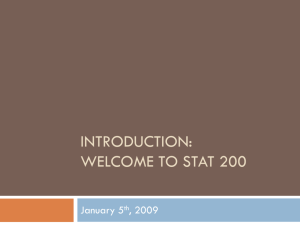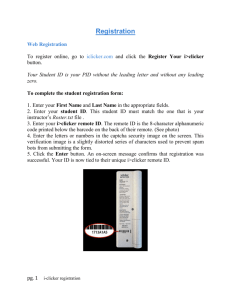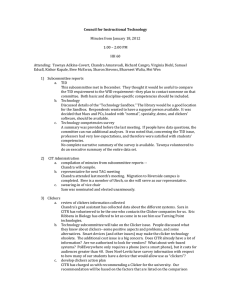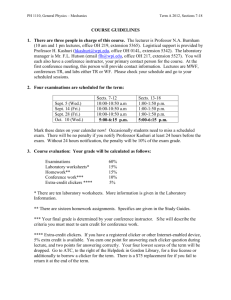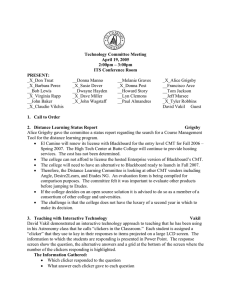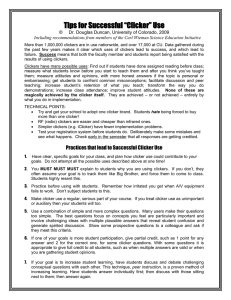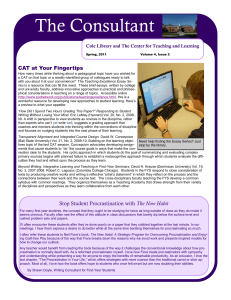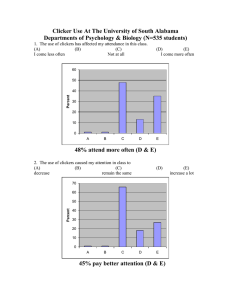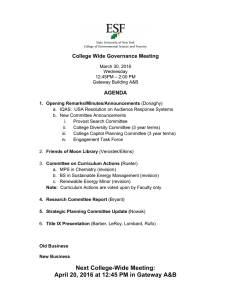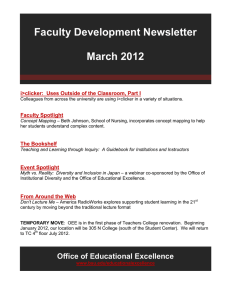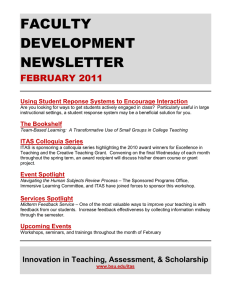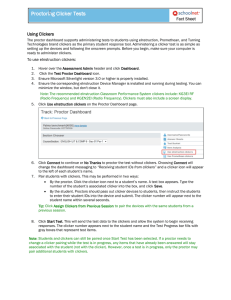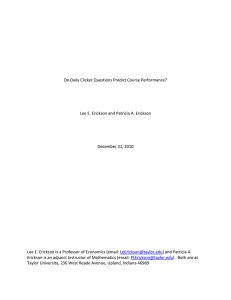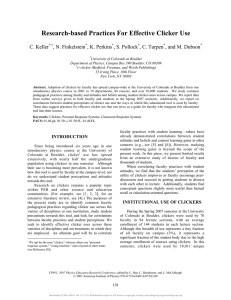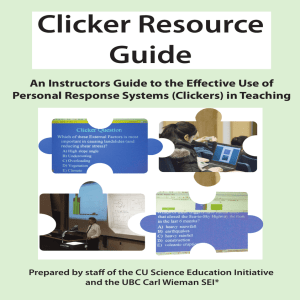Seminar in Advanced Physiology of Exercise
advertisement
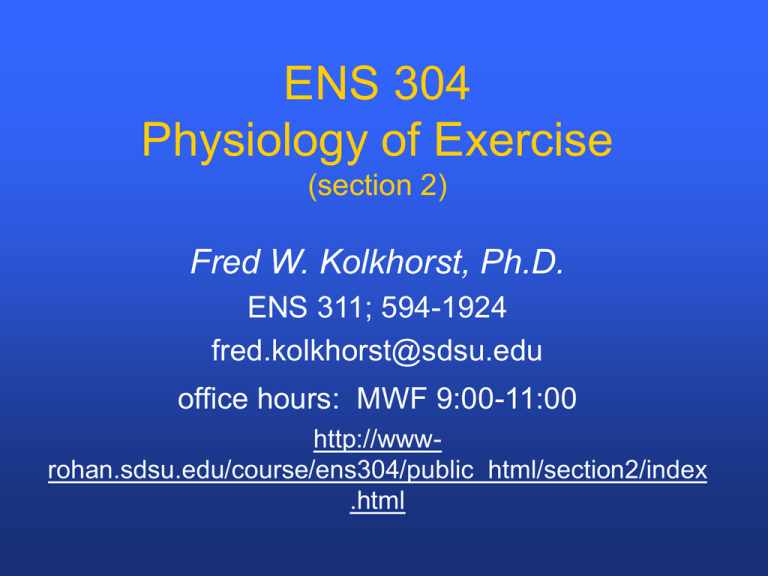
ENS 304 Physiology of Exercise (section 2) Fred W. Kolkhorst, Ph.D. ENS 311; 594-1924 fred.kolkhorst@sdsu.edu office hours: MWF 9:00-11:00 http://wwwrohan.sdsu.edu/course/ens304/public_html/section2/index .html Exercise Physiology A biological study of physical activity stresses, both acute effects and training adaptations Typical ergometers used to study exercise effects – cycle – treadmill Course Prerequisites classified as a major in kinesiology or nutrition grade of C (not C-) or better in BIOL 336 (Human Physiology) or equivalent course ENS 210 or equivalent course If WebPortal indicates that you have NOT met these prerequisites, you MUST provide documentation to me. How to be Successful in Physiology of Exercise Class will begin at 8:00, everyone is to be on time. If you are late, enter the back door of the classroom so as not to disturb others Cell phones are to be turned off during class YOU determine your success through your consistent effort Take an active part in your learning; don’t hesitate to ask questions or visit me, that’s what I’m here for Attempt to understand rather than memorize Study with classmates on a regular basis Sit in the front, don’t miss class e-book available from McGraw Hill 1. Go to http://ebooks.primisonline.com 2. Click on the “McGraw-Hill e-book” icon (the big yellow ”e”). 3. Review the 5 steps listed on the screen then click “Next”. 4. On “Step 1” Click “Social Sciences and Humanities”. 5. Select the appropriate discipline, and then select text title. (Be sure to select correct edition.) Powers & Howley, Exercise Physiology: Theory and Application to Fintess and Performance, 2007. 6. Follow the screen prompts. eInstruction Personal Response Pads (clickers) We will use the CPS Personal Response Pads (i.e., “clickers”) Purchase clicker from Aztec Shops Before you can use clicker, must register through Blackboard – Instructions found in Blackboard (Tools/CPS Connection) – Must first create an account and register your clicker Register clicker for class by Tue, Sep 4 What is a Clicker? Classroom Performance System Each student has a clicker Clickers send wireless signals Computer has a receiver Displays responses from class Why Clickers? Questions will be posed during each class that require your response Enhances student learning Encourages interaction Provides feedback Increase active learning Quizzes will be given periodically using the clickers Exams will be administered with paper/pencil Course Grading Four exams 40-60 points each (200 points) Eight unannounced quizzes 5 points each – will throw out two lowest scores (60 points) Plusses and minuses will be used for course grades Review of Physiological Principles atoms, molecules, and ions substrates products ATP ADP + Pi + energy glucose 2 pyruvic acid 2 lactic acid Review of Physiological Principles Enzymes speed up reaction rates ATPase ATP <———> ADP + Pi + energy carbonic anhydrase H+ + HCO3- <——————> H2CO3 <——> H2O + CO2 Review of Physiological Principles pH buffer homeostasis steady-state Absolute and Relative Comparisons A 100-lb woman can bench press 50 lb and a 200-lb man can bench press 75 lb. Who is the strongest? Explain. A. 100-lb woman B. 200-lb man Absolute strength – man can lift 25 lb more than woman Relative strength – woman can lift 0.5 lb / lb body weight whereas man can lift only 0.375 lb / lb body weight Absolute and Relative Comparisons Question Would you prescribe an absolute or relative target HR in a fitness class of 20- and 80-yr old clients? Explain. Interpreting Graphs Relationship between Variables Independent variable – one that is manipulated/controlled by investigator Dependent variable – one that is measured to determine response from varying independent variable Relationship of Variables Curvilinear Linear Blood [La] HR Running Velocity Running Velocity Identify the dependent and independent variables Interpreting Graphs Figure 1 Figure 2

